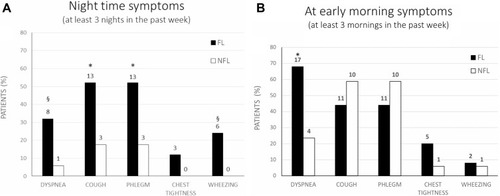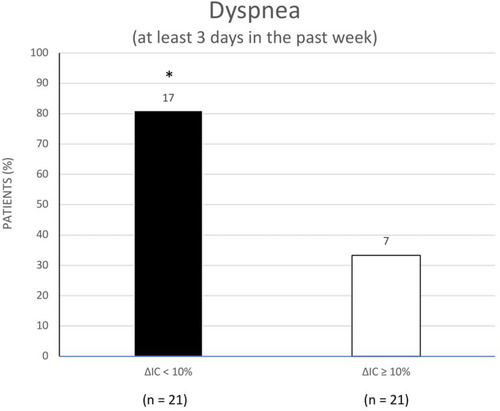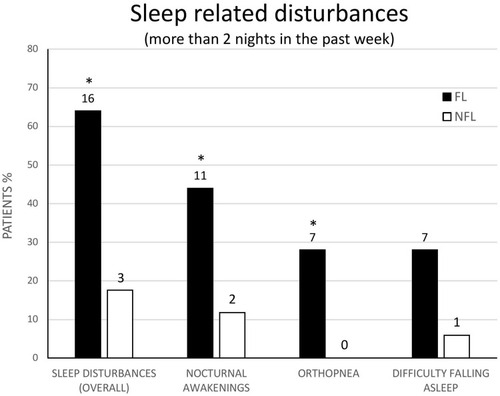Figures & data
Table 1 Anthropometric Data of Subjects
Table 2 Baseline Functional Characteristics of Patients
Figure 1 A representative COPD patient reporting no dyspnea and orthopnea during night-time and dyspnea at early morning (two days in the past week – no rescue drugs). Note the absence of supine EFL during tidal expiration assessed by the NEP method and an increase of supine IC of 730 mL (upper panels A and B). A representative COPD patient reporting dyspnea and orthopnea during night-time and dyspnea at early morning (all days in the past week – rescue drugs on two occasions). Note the presence of supine EFL during tidal expiration assessed by the NEP method and no change in supine IC (lower panels C and D).

Figure 2 (A) Night-time symptoms reported by FL and NFL COPD patients 3 or more times in the past week were shown. Cough and phlegm were more significantly reported in FL patients (*p<0.05). Dyspnea occurred more frequently (§p=0.06) in FL patients as well as wheezing (§p=0.06). (B) At early morning symptoms reported by FL vs NFL COPD patients, 3 or more times in the past week were shown. Dyspnea was significantly more frequent in FL patients (*p<0.05).

Figure 3 The presence of dyspnea reported, either during night-time or early morning, in the past week is shown in the function of change in IC with recumbency (ΔIC). An increase of ΔIC< 10% of the respective value in seated position was associated with a significantly greater prevalence of dyspnea in COPD patients (*p<0.05).


